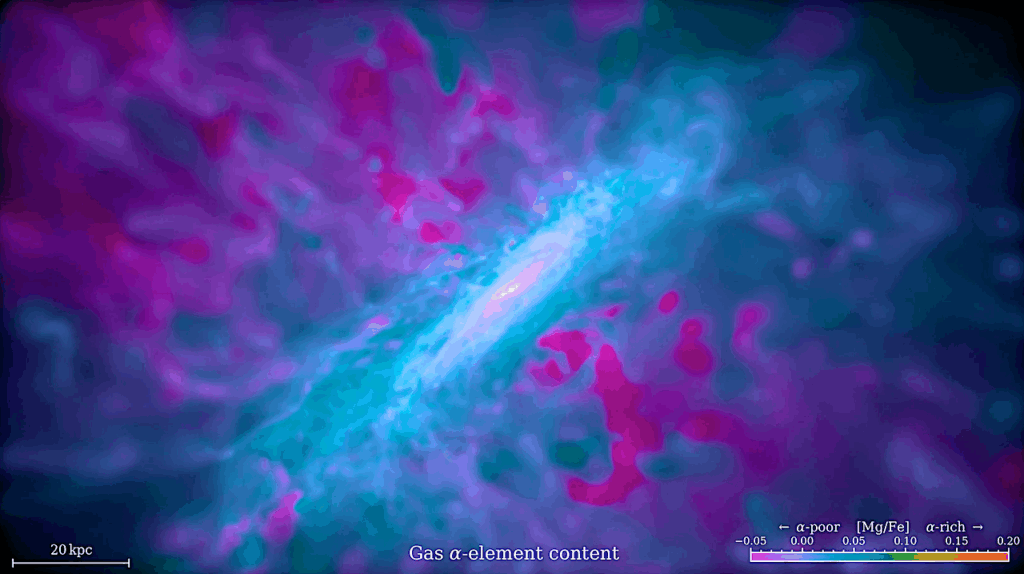A Search For Technosignatures Around 11,680 Stars With The Green Bank Telescope At 1.15-1.73 GHz

We conducted a search for narrowband radio signals over four observing sessions in 2020-2023 with the L-band receiver (1.15-1.73 GHz) of the 100 m diameter Green Bank Telescope.
We pointed the telescope in the directions of 62 TESS Objects of Interest, capturing radio emissions from a total of ~11,860 stars and planetary systems in the ~9 arcminute beam of the telescope. All detections were either automatically rejected or visually inspected and confirmed to be of anthropogenic nature. In this work, we also quantified the end-to-end efficiency of radio SETI pipelines with a signal injection and recovery analysis.
The UCLA SETI pipeline recovers 94.0% of the injected signals over the usable frequency range of the receiver and 98.7% of the injections when regions of dense RFI are excluded. In another pipeline that uses incoherent sums of 51 consecutive spectra, the recovery rate is ~15 times smaller at ~6%. The pipeline efficiency affects SETI search volume calculations as well as calculations of upper bounds on the number of transmitting civilizations.
We developed an improved Drake Figure of Merit for SETI search volume calculations that includes the pipeline efficiency and frequency drift rate coverage. Based on our observations, we found that there is a high probability (94.0-98.7%) that fewer than ~0.014% of stars earlier than M8 within 100 pc host a transmitter that is detectable in our search (EIRP > 10e12 W).
Finally, we showed that the UCLA SETI pipeline natively detects the signals detected with AI techniques by Ma et al., 2023.
Jean-Luc Margot, Megan G. Li, Pavlo Pinchuk, Nathan Myhrvold, Lea E. Alcantara, Megan T. Andrakin, Jeth Arunseangroj, Damien S. Baclet, Madison H. Belk, Zerxes R. Bhadha, Nicholas W. Brandis, Robert E. Carey, Harrison P. Cassar, Sai S. Chava, Calvin Chen, James Chen, Kellen T. Cheng, Alessia Cimbri, Benjamin Cloutier, Jordan A. Combitsis, Kelly L. Couvrette, Brandon P. Coy, Kyle W. Davis, Antoine F. Delcayre, Michelle R. Du, Sarah E. Feil, Danning Fu, Travis J. Gilmore, Emery Grahill-Bland, Laura M. Iglesias, Zoe Juneau, Anthony G. Karapetian, George Karfakis, Christopher T. Lambert, Eric A. Lazbin, Jian H. Li, Zhuofu (Chester)Li, Darren J. Lu, Detao Ma, Vedant Mathur, Mary H. Minasyan, Mark T. Nasielski, Janice T. Nguyen, Lorraine M. Nicholson, Divij Ohri, Atharva U. Padhye, Supreethi V. Penmetcha, Yugantar Prakash, Xinyi (Cindy)Qi, Vedant Sahu, Joshua A. Scally, Zefyr Scott, Trevor J. Seddon, Lara-Lynn V. Shohet, Anchal Sinha, Anthony E. Sinigiani, Jiuxu Song, Spencer M. Stice, Andria Uplisashvili, Krishna Vanga, Amaury G. Vazquez, George Vetushko, Valeria Villa, Maria Vincent, Ian J. Waasdorp, Ian B. Wagaman, Amanda Wang, Jade C. Wight, Ella Wong, Natsuko Yamaguchi, Zijin Zhang, Junyang Zhao, Ryan S. Lynch
Comments: 17 pages, 8 figures, submitted
Subjects: Instrumentation and Methods for Astrophysics (astro-ph.IM); Earth and Planetary Astrophysics (astro-ph.EP)
Cite as: arXiv:2308.02712 [astro-ph.IM] (or arXiv:2308.02712v1 [astro-ph.IM] for this version)
Submission history
From: Jean-Luc Margot
[v1] Fri, 4 Aug 2023 21:17:21 UTC (255 KB)
https://arxiv.org/abs/2308.02712
Astrobiology, SETI,








